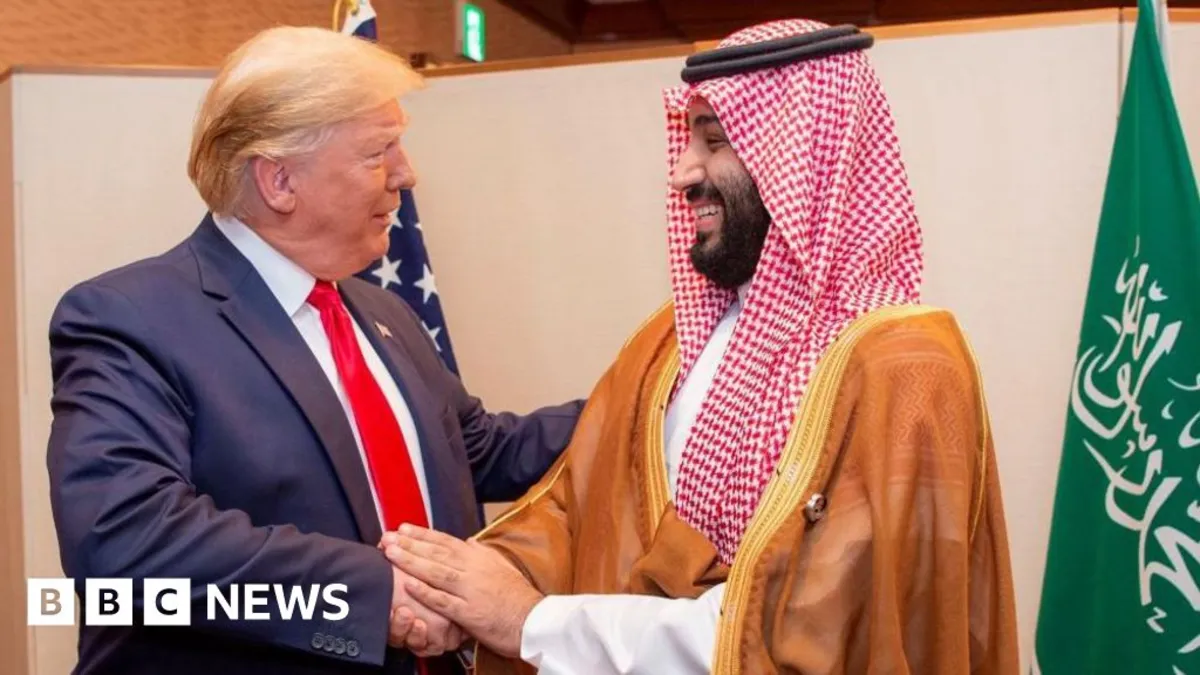
As US President Donald Trump prepares for his visit to the Gulf states this week, a significant focus of his trip will be on securing substantial new investments for the US economy. According to economist Karen Young, a senior fellow at the Middle East Institute think tank, Trump is eager to announce increased Gulf funding for the United States. She notes that he envisions a prominent display at a meeting showcasing potential investment areas and their projected impacts on job creation and domestic manufacturing in America.
Trump is scheduled to arrive in the Saudi capital, Riyadh, on Tuesday, May 13, where he will meet with Crown Prince Mohammed bin Salman. Following this, he is expected to attend a summit with Gulf leaders on May 14 before traveling to Qatar the same day, and concluding his three-day tour in the United Arab Emirates (UAE) on May 15.
This visit to Saudi Arabia holds particular significance as it marks Trump's first overseas trip of his second term in the White House. Initially, it was planned prior to the death of Pope Francis, which required Trump’s attendance at the funeral in Rome in late April. Notably, Saudi Arabia was also the first country Trump visited during his first term, diverging from the longstanding trend of US presidents starting their international tours in the UK, Canada, or Mexico.
By securing new investments from Gulf states, especially from their state-backed sovereign wealth funds, Trump aims to illustrate the success of his America First agenda back home. This presidential visit is attracting top executives from Wall Street and Silicon Valley to Saudi Arabia. A Saudi-US investment forum on May 13 in Riyadh will feature prominent CEOs from companies including BlackRock, Palantir, Citigroup, IBM, Qualcomm, Alphabet, and Franklin Templeton.
This investment push comes amid economic challenges, as Trump's recent import tariffs have disrupted global trade and negatively impacted the US economy. Recently, US economic output experienced a decline for the first time in three years. Back in January, Crown Prince Mohammed announced plans for Saudi Arabia to invest $600 billion in the US over the coming years. However, Trump has expressed a desire to increase this figure to $1 trillion, including additional purchases of US military equipment.
According to Ali Shihabi, a Saudi commentator with close ties to the government, several economic agreements are anticipated to be signed during Trump's visit. These agreements aim to further integrate the US and Saudi economies through joint ventures, procurement of American goods, and military equipment purchases. The Public Investment Fund (PIF) of Saudi Arabia, which manages assets worth $925 billion, has already made various investments in the US, including stakes in Uber, Electronic Arts, and Lucid Motors.
Meanwhile, the UAE has pledged to invest $1.4 trillion in the US over the next decade, focusing on sectors such as artificial intelligence, semiconductors, energy, and manufacturing. This commitment was announced by the White House in March following a meeting between President Trump and UAE's National Security Advisor, Sheikh Tahnoon bin Zayed Al Nahyan.
Despite these ambitious figures, Karen Young from the Middle East Institute suggests that the scale of these investments may not be realistic in the short term. She emphasizes that these figures should be viewed as long-term strategic moves rather than immediate commitments.
During Trump's visit, reports indicate that Saudi Arabia is set to agree on purchasing over $100 billion worth of US arms, including missiles, radar systems, and transport aircraft. While the US has historically been a key arms supplier to Saudi Arabia, the Biden administration had halted the sale of offensive weapons in 2021 due to concerns about Saudi involvement in the war in Yemen and the killing of journalist Jamal Khashoggi. However, the Biden White House resumed arms sales last year, citing a cessation of bombings in Yemen.
Another major topic during Trump's visit will be artificial intelligence. Talks are expected to revolve around attracting Gulf investments into US tech firms and enhancing the region's access to advanced American semiconductors. The UAE and Saudi Arabia have been channeling billions into the tech and AI sectors as part of efforts to diversify their economies away from oil dependency.
While much attention will be on President Trump seeking Gulf capital for the US, Saudi Arabia is equally focused on attracting American investments into its ambitious Vision 2030 program. This initiative aims to diversify the Saudi economy through massive construction projects and investments in entertainment, tourism, mining, and sports. However, foreign direct investment into Saudi Arabia has been on a decline for three consecutive years, leading to challenges in attracting overseas capital.
For Trump, this visit represents an opportunity to secure investment deals that can be framed as victories for his economic agenda, while for Saudi Arabia, it is about reinforcing ties with its longstanding Western ally.